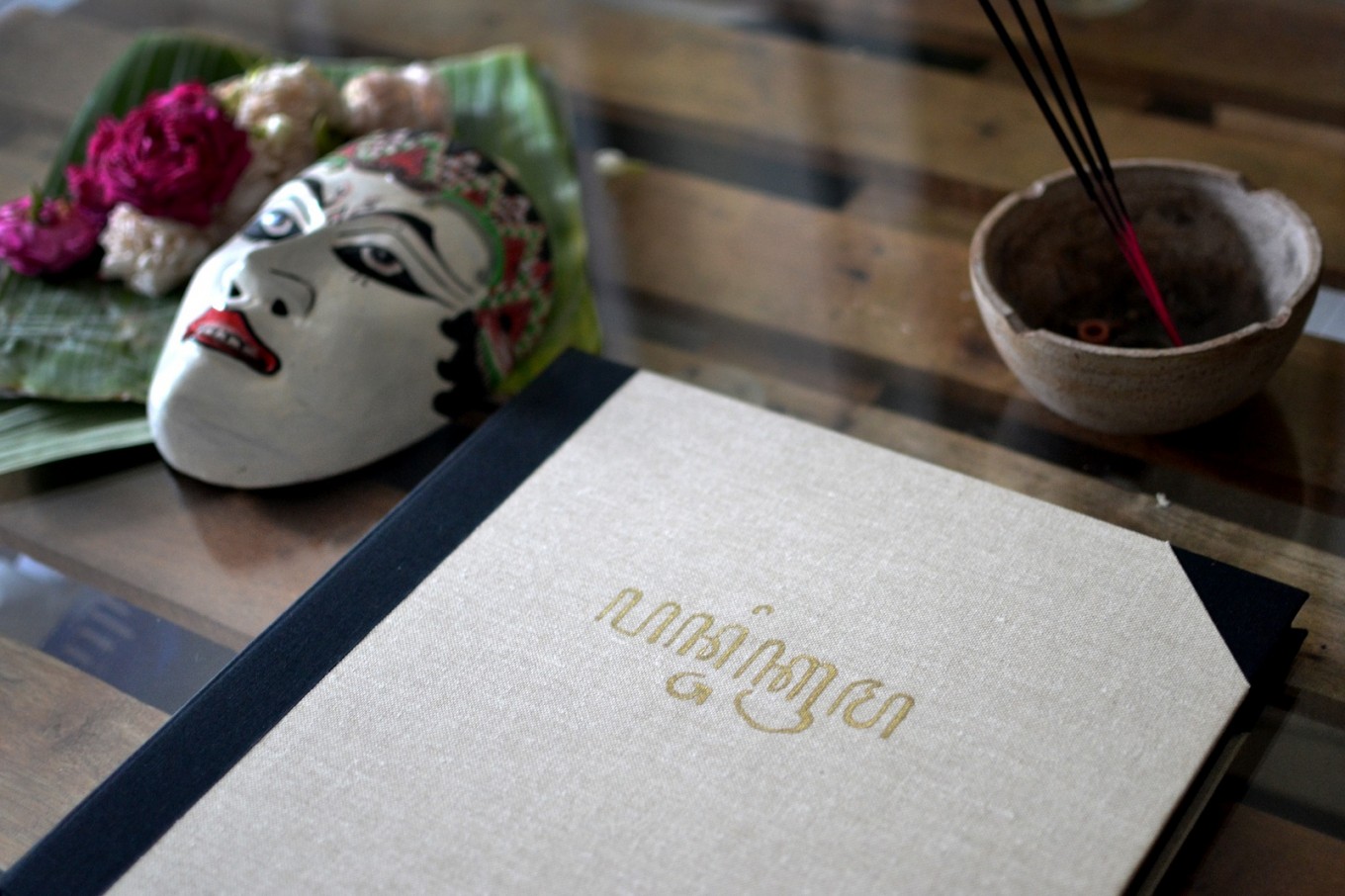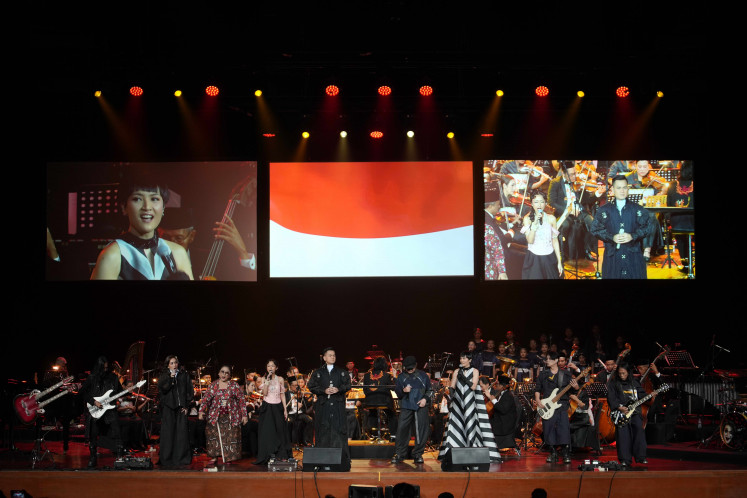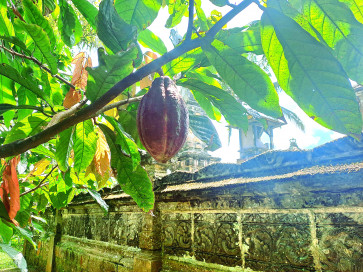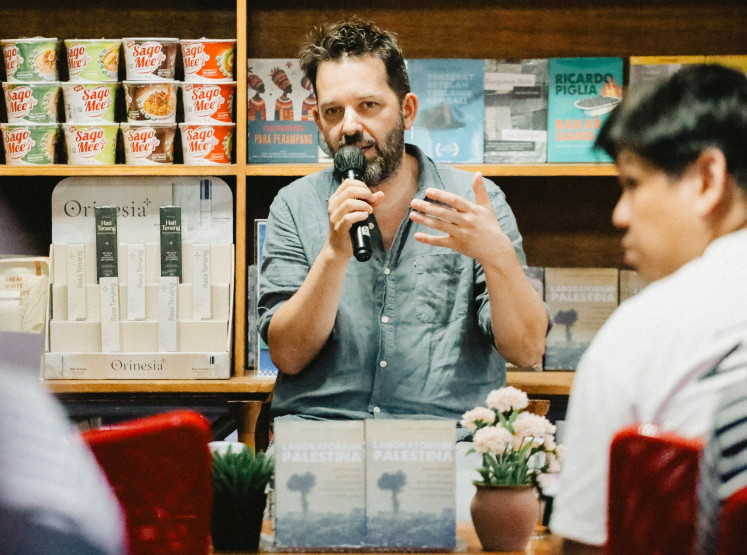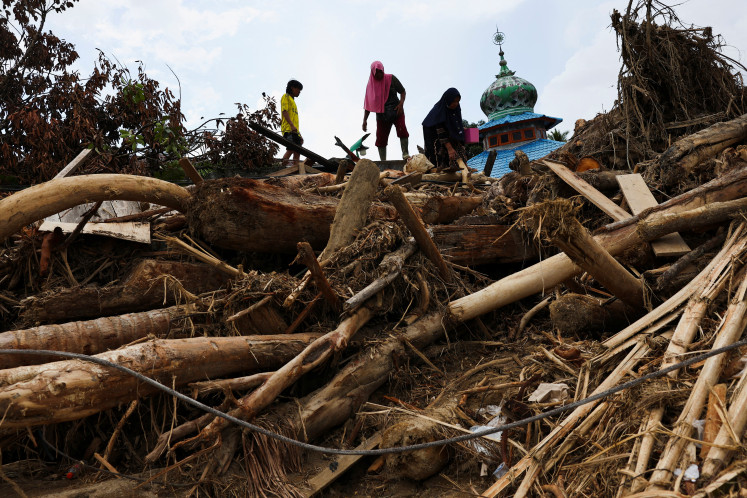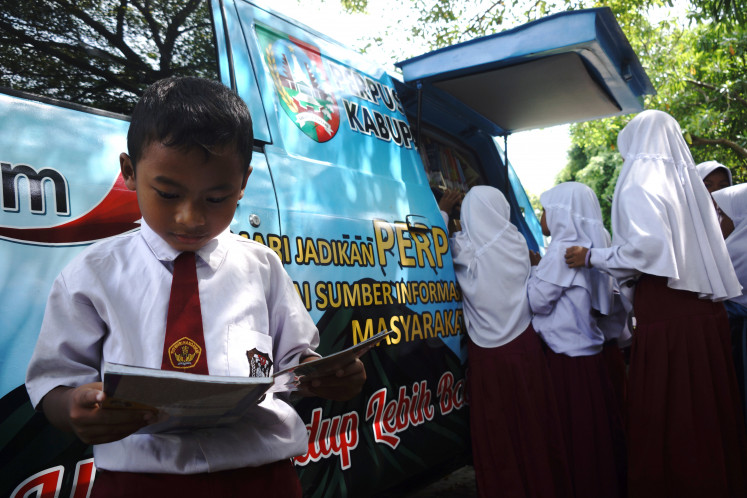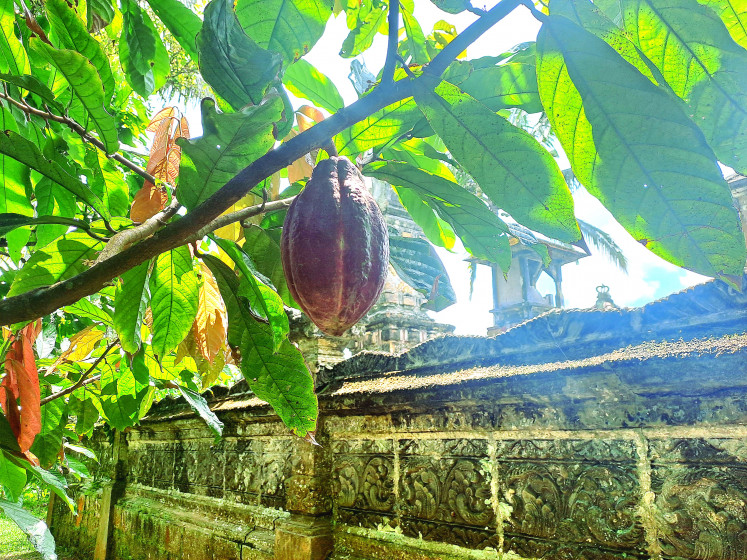Popular Reads
Top Results
Can't find what you're looking for?
View all search resultsPopular Reads
Top Results
Can't find what you're looking for?
View all search resultsSaving the Javanese heritage of 'Cerita Panji'
A photobook titled Panji Kromo: The Last Breath of the Prince offers an interesting documentation of the Topeng Panji mask dance, a dance that depicts Cerita Panji stories.
Change text size
Gift Premium Articles
to Anyone
A
photobook titled Panji Kromo: The Last Breath of the Prince offers an interesting documentation of the Topeng Panji mask dance, a dance that depicts stories from Cerita Panji (Panji Stories).
Cerita Panji itself is a collection of the heroic stories about Raden Inu Kertapati and Dewi Sekartaji during the Khadiri Kingdom in the 11th century. The stories have been translated into traditional art in Indonesia, such as Wayang Beber and Kethek Ogleng from Pacitan, and Penthul Tembem from Madiun.
The photobook focuses on the Topeng Panji mask dance, which is not only rare but threatened in its very existence in the villages around Yogyakarta. The photos of the dancers are displayed in the Dutch East Indies' photography style using monochrome-like color saturation and unique lighting and posing styles. The works are said to be inspired by old photo collections from the Royal Netherlands Institute of Southeast Asian and Caribbean Studies (KITLV), as well as photographers in the Dutch East Indies' era, like Walter B. Woodbury and Kassian Cephas.
Featuring works by Spanish photographer Diego Zapatero, who collaborated with Belgian anthropologist Patrick Vanhoebrouck, the visual anthropology project started in 2011 by documenting Topeng Panji dancers in Bobung, Semanu and Karang Duwet in Gunungkidul regency and Sentolo in Kulonprogo regency.
Read also: Looking at the other side of batik
Vanhoebrouck has lived in Indonesia for 15 years to learn about Javanese culture and spirituality. He was inspired to discover Javanese culture, especially Topeng Panji dance, after he met Ben Anderson at Cornell University in New York. It was Anderson who introduced him to Javanese mask collections from the Mangkunegaran palace in the form of hundreds of positive image files. Vanhoebrouck later explored more about the masks during his internship at the Field Museum of Natural History in Chicago, where he catalogued Javanese mask collections by type, history and character.
In 2010, Vanhoebrouck became acquainted with Zapatero, a young photographer who was studying at the Indonesian Arts Institute (ISI) in Yogyakarta on a scholarship and is particularly passionate about documenting culture. In addition to the Panji Kromo project, Zapatero has also created photo documentations on Dayak tribe tattoos, the daily life of the Tengger tribe at Mount Bromo, and the Semana Santa ceremony, among others.
The Topeng Panji project was particularly interesting for both men, since they had the opportunity to meet, discuss and enter the life of the dancers, gaining much insight not found in any literature. They were amazed by the spirit and enthusiasm of the dance teachers, who devise the dance's choreography and poses. They learned that the dance is much more than just a surviving element of heritage; it presents the stories of Javanese wisdom and philosophy.
For Western anthropologists, Cerita Panji is a very valuable work of oral literature. As Indonesia's original literature heritage, it has been spread to Cambodia, Thailand and Malaysia, highlighting the wisdom of a timeless universal and relevant life.
Read also: Dutch heritage red church in Probolinggo
"The most important philosophy in Cerita Panji is about leadership; how is the learning process to become a true leader, a leader that brings peace and prosperity, which in the story was illustrated through the journey of Raden Inu Kertapati and his partner, Dewi Sekartaji," said Vanhoebrouck.
Following the book’s publication, the duo still maintains a good relationship with the dancers. They always present during Topeng Panji dance performances across the region. Vanhoebrouck has been invited as an expert speaker in seminars on Javanese culture, especially about Cerita Panji.
The two said they were very happy to hear that Prof. Wardiman Djojonegoro had made efforts to have Cerita Panji recognized as a Memory of the World by UNESCO, alongside five other countries, namely Malaysia, Cambodia, Thailand, the UK and the Netherlands.
But they seek more than just recognition; they want the documentation to motivate the Topeng Panji dancers to keep creating and inspiring Indonesian youth to enliven Cerita Panji in their works, such as photography, film, theater, choreography, music, painting, literature and comic books. (kes)

